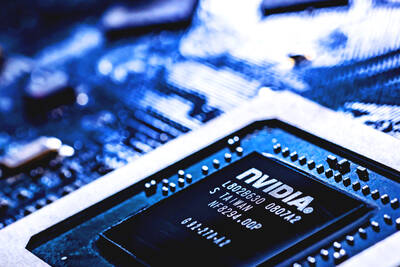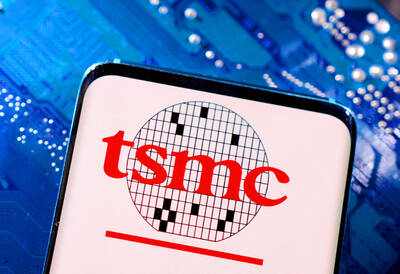Thanks to Intel Corp’s ultra-voltage (ULV) technology, notebook computers that are thin, lightweight and energy-efficient have prevailed at the just-closed Computex trade show in Taipei.
Abundant at the show were also ULV models that can support wireless transmission by using worldwide interoperability for microwave access (WiMAX) or wireless fidelity (Wi-Fi) technology.
With the support of major Taiwanese PC makers like Acer Inc (宏碁), Asustek Computer Inc (華碩), Gigabyte Technology Co (技嘉) and Micro-Star International Co’s (微星), Intel was seen as aggressively promoting the ULV platform last week.
But DRAMeXchange Technology Inc (集邦科技) said the US chip giant’s move was aimed at protecting its profitability in the traditional notebook market against erosion from the hot-selling netbooks, which were arguably made possible by Intel’s own Atom processors.
“Thin, lightweight models and long battery life should be the main focuses for the notebook industry in 2009,” Citigroup analyst Eve Jung (戎宜蘋) said last week.
She said that ULV models still had constraints to overcome if computer makers wanted to see stable revenue growth in the coming months.
Sean Maloney, Intel’s executive vice president and chief sales and marketing officer, set the tone for anticipated success in ULV notebooks during his opening speech at Computex on Tuesday, the same day the company introduced its latest ULV Core 2 Duo processors in Taipei.
“Enabled by ULV Core 2 Duo processors ... ULV notebook users are able to travel light, enjoy quality multimedia performance, as well as over seven hours of battery life at mainstream prices as low as US$499,” Maloney said.
He said ULV laptops would make up a major portion of the company’s sales volume as well as the entire global PC food chain.
Taipei-based market researcher DRAMeXchange said on May 13 the shipments of ULV notebooks would be between 8 million and 10 million units worldwide this year, accounting for between 7 percent and 9 percent of the traditional notebook market share.
Visitors to this year’s Computex could easily see the notebook market’s trend toward slim, light design and energy conservation.
President Ma Ying-jeou (馬英九) also had a chance to see the trends during a surprise visit to the Nangang exhibition hall on the last day of Computex on Saturday. He examined Micro-Star’s three ULV notebooks in its X-Slim series.
Asustek was aggressive in this segment as well, introducing five models of ULV notebooks during the show. The company said the products’ designers gained inspiration from the lightness of butterflies, although the machines still looked industrial due to their metal alloy casings.
Acer, which followed Asustek in launching netbooks two years ago, was among the first to introduce ULV notebooks this time. The company first unveiled its Aspire TimeLine ULV series in April, before introducing a full product line on May 21 with seven models with 13.3-inch, 14-inch and 15.6-inch screens.
“The ULV laptops will carve out a niche in the market but at the expense of desk-top PCs, not necessarily netbooks or traditional laptops,” Scott Lin (林顯郎), president of Acer’s Taiwan operations, said at the launch.
Acer forecast ULV notebooks would make up 20 percent of the global laptop market next year, with netbooks and traditional notebooks accounting for 20 percent and 60 percent respectively.
The company is likely to control 50 percent or more of the ULV notebook market, DRAMeXchange said.
Whether or not Acer can achieve its shipment target of between 5 million and 6 million units this year will depend on how it can solve the shortage of key components in the short term, the researcher said.
In a note to clients on Tuesday, Citigroup’s Jung said the ULV notebooks could become a major growth driver in the second half of the year, as major PC makers are planning to launch new models soon. Several company representatives said at Computex that they expected their products to hit the market sometime next quarter or early in the fourth quarter.
Component shortages, however, are likely to initially affect PC makers’ ability to offer a more complete product line, Jung said.
“How to secure sufficient supply of key components such as the third generation of double data rate memory chips, or DDR III, and light emitting diode backlight modules could be issues to watch,” she said in the note.
That may explain why Asustek and Micro-Star adopted the second-generation DDR memory chips, or DDR 2, rather than DDR 3 in their ULV models in the initial stage. But PC makers are facing other challenges, too.
“We think PC OEMs [original equipment manufacturers] and notebook ODMs [original design manufacturers] still have obstacles to overcome, especially in industrial design and production yield,” Jung said, referring to the slimmer design of ULV models.

When Lika Megreladze was a child, life in her native western Georgian region of Guria revolved around tea. Her mother worked for decades as a scientist at the Soviet Union’s Institute of Tea and Subtropical Crops in the village of Anaseuli, Georgia, perfecting cultivation methods for a Georgian tea industry that supplied the bulk of the vast communist state’s brews. “When I was a child, this was only my mum’s workplace. Only later I realized that it was something big,” she said. Now, the institute lies abandoned. Yellowed papers are strewn around its decaying corridors, and a statue of Soviet founder Vladimir Lenin

UNIFYING OPPOSITION: Numerous companies have registered complaints over the potential levies, bringing together rival automakers in voicing their reservations US President Donald Trump is readying plans for industry-specific tariffs to kick in alongside his country-by-country duties in two weeks, ramping up his push to reshape the US’ standing in the global trading system by penalizing purchases from abroad. Administration officials could release details of Trump’s planned 50 percent duty on copper in the days before they are set to take effect on Friday next week, a person familiar with the matter said. That is the same date Trump’s “reciprocal” levies on products from more than 100 nations are slated to begin. Trump on Tuesday said that he is likely to impose tariffs

HELPING HAND: Approving the sale of H20s could give China the edge it needs to capture market share and become the global standard, a US representative said The US President Donald Trump administration’s decision allowing Nvidia Corp to resume shipments of its H20 artificial intelligence (AI) chips to China risks bolstering Beijing’s military capabilities and expanding its capacity to compete with the US, the head of the US House Select Committee on Strategic Competition Between the United States and the Chinese Communist Party said. “The H20, which is a cost-effective and powerful AI inference chip, far surpasses China’s indigenous capability and would therefore provide a substantial increase to China’s AI development,” committee chairman John Moolenaar, a Michigan Republican, said on Friday in a letter to US Secretary of

Taiwan Semiconductor Manufacturing Co’s (TSMC, 台積電) market value closed above US$1 trillion for the first time in Taipei last week, with a raised sales forecast driven by robust artificial intelligence (AI) demand. TSMC saw its Taiwanese shares climb to a record high on Friday, a near 50 percent rise from an April low. That has made it the first Asian stock worth more than US$1 trillion, since PetroChina Co (中國石油天然氣) briefly reached the milestone in 2007. As investors turned calm after their aggressive buying on Friday, amid optimism over the chipmaker’s business outlook, TSMC lost 0.43 percent to close at NT$1,150